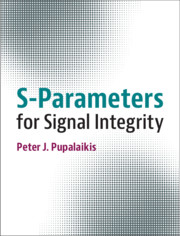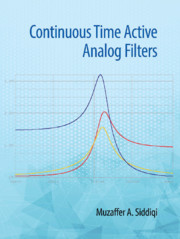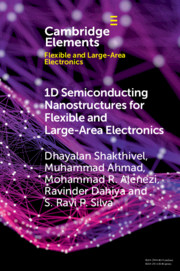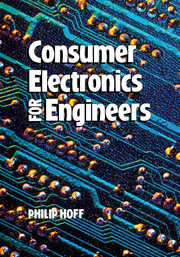Refine search
Actions for selected content:
1784 results in Circuits and systems
7 - Basic PLL Architectures
-
- Book:
- Design of CMOS Phase-Locked Loops
- Published online:
- 05 February 2020
- Print publication:
- 30 January 2020, pp 209-245
-
- Chapter
- Export citation
15 - Frequency Dividers
-
- Book:
- Design of CMOS Phase-Locked Loops
- Published online:
- 05 February 2020
- Print publication:
- 30 January 2020, pp 453-485
-
- Chapter
- Export citation
9 - PLL Design Study
-
- Book:
- Design of CMOS Phase-Locked Loops
- Published online:
- 05 February 2020
- Print publication:
- 30 January 2020, pp 277-304
-
- Chapter
- Export citation
Preface
-
- Book:
- Design of CMOS Phase-Locked Loops
- Published online:
- 05 February 2020
- Print publication:
- 30 January 2020, pp xiii-xiii
-
- Chapter
- Export citation
8 - PLL Design Considerations
-
- Book:
- Design of CMOS Phase-Locked Loops
- Published online:
- 05 February 2020
- Print publication:
- 30 January 2020, pp 246-276
-
- Chapter
- Export citation
11 - Delay-Locked Loops
-
- Book:
- Design of CMOS Phase-Locked Loops
- Published online:
- 05 February 2020
- Print publication:
- 30 January 2020, pp 346-367
-
- Chapter
- Export citation
Contents
-
- Book:
- Design of CMOS Phase-Locked Loops
- Published online:
- 05 February 2020
- Print publication:
- 30 January 2020, pp vii-xii
-
- Chapter
- Export citation
2 - Introduction to Jitter and Phase Noise
-
- Book:
- Design of CMOS Phase-Locked Loops
- Published online:
- 05 February 2020
- Print publication:
- 30 January 2020, pp 34-63
-
- Chapter
- Export citation
Dedication
-
- Book:
- Design of CMOS Phase-Locked Loops
- Published online:
- 05 February 2020
- Print publication:
- 30 January 2020, pp v-vi
-
- Chapter
- Export citation
About the Author
-
- Book:
- Design of CMOS Phase-Locked Loops
- Published online:
- 05 February 2020
- Print publication:
- 30 January 2020, pp xvi-xvi
-
- Chapter
- Export citation

S-Parameters for Signal Integrity
-
- Published online:
- 18 January 2020
- Print publication:
- 06 February 2020

Continuous Time Active Analog Filters
-
- Published online:
- 24 December 2019
- Print publication:
- 26 March 2020

1D Semiconducting Nanostructures for Flexible and Large-Area Electronics
- Growth Mechanisms and Suitability
-
- Published online:
- 21 October 2019
- Print publication:
- 31 October 2019
-
- Element
- Export citation

Consumer Electronics for Engineers
-
- Published online:
- 13 September 2019
- Print publication:
- 28 July 1998
-
- Textbook
- Export citation
Preface
-
- Book:
- Fast Techniques for Integrated Circuit Design
- Published online:
- 08 August 2019
- Print publication:
- 15 August 2019, pp ix-x
-
- Chapter
- Export citation
5 - Electromagnetism: Circuit Applications
-
- Book:
- Fast Techniques for Integrated Circuit Design
- Published online:
- 08 August 2019
- Print publication:
- 15 August 2019, pp 101-150
-
- Chapter
- Export citation
Reviews
-
- Book:
- Fast Techniques for Integrated Circuit Design
- Published online:
- 08 August 2019
- Print publication:
- 15 August 2019, pp ii-ii
-
- Chapter
- Export citation
Contents
-
- Book:
- Fast Techniques for Integrated Circuit Design
- Published online:
- 08 August 2019
- Print publication:
- 15 August 2019, pp vii-viii
-
- Chapter
- Export citation
Copyright page
-
- Book:
- Fast Techniques for Integrated Circuit Design
- Published online:
- 08 August 2019
- Print publication:
- 15 August 2019, pp iv-iv
-
- Chapter
- Export citation
4 - Electromagnetism: Fundamentals
-
- Book:
- Fast Techniques for Integrated Circuit Design
- Published online:
- 08 August 2019
- Print publication:
- 15 August 2019, pp 50-100
-
- Chapter
- Export citation
